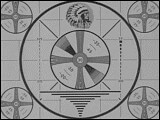Tweaking for Dollars
I just finished reading Steve Krug’s latest book, Rocket Surgery Made Easy, and was particularly struck by his suggestion that you tweak your website rather than redesigning it.
 In fact, one of his usability testing maxims is “When fixing problems, always do the least you can do.”
In fact, one of his usability testing maxims is “When fixing problems, always do the least you can do.”
“Do the least you can do” isn’t a phrase you hear often in business. Of course, you see it in practice every time you turn around, but nobody admits that minimal effort is their work philosophy. But for fixing usability problems on a website, it makes a lot of sense:
- Website users (aka humans) are notoriously resistant to change, even if the change is an improvement. So keeping the change minimal is good.
- You can make small changes – tweaks – quickly, so you can see an improvement quickly.
- Tweaks usually don’t cost much in development or design time or dollars.
- Tweaks don’t upset the apple carts of stakeholders the way a redesign does. There’s much less resistance to a tweak.
- Rather than the drop in sales or conversions that inevitably follows a redesign, a tweak might actually increase sales.
Steve Krug mentions the case of a company CEO whose site was used in a usability test demo at a workshop. The demo test turned up a usability problem with the process of signing up for online billing. The company implemented a quick tweak, and based on the first couple of months’ results, they estimated that this single tweak would save them $100,000 a year (presumably in postage and printing, though the book doesn’t elaborate).
So how do you know what to tweak? Do some usability testing. I’ve been using Krug’s approach to discount usability testing for years, since I read his first book, Don’t Make Me Think. When they’ve watched actual users trying to do something on their site, my customers have always found something they could do to make their site work better.
